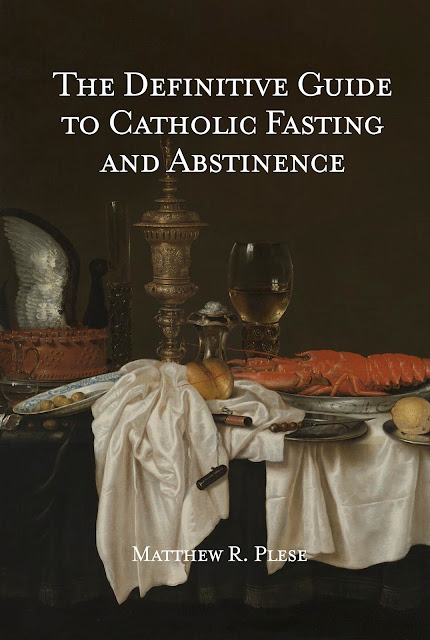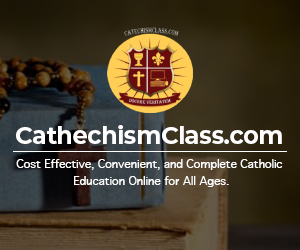As reported this morning by the
New Liturgical Movement, the Holy Father while presiding over the canonization of seven new saints restored the use of the Papal Fanon. As explained by the Catholic Encyclopedia, the Papal Fanon is "a shoulder-cape worn by the pope alone, consisting of two pieces of
white silk ornamented with narrow woven stripes of red and gold; the
pieces are nearly circular in shape but somewhat unequal in size and the
smaller is laid on and fastened to the larger one.."
The 7 Newly Declared Saints:
- Kateri Tekakwitha, the young Mohawk woman who converted to Catholicism,
will become the first Native American canonized as a saint.
- Marianne Cope, a German nun who followed St. Damien of Molokai in ministering to lepers in Hawaii
- Jacques Berthieu, a French Jesuit
- Pedro Calungsod, a Filipino lay catechist and martyr
- Giovanni Battista Piamarta, an Italian priest
- Maria del Carmen (nee Maria Salles y Barangueras), the Spanish foundress of the Conceptionist Missionary Sisters of Teaching
- Anna Schaffer, a German lay woman.
Saint Marianne Cope
The Holy Father's Sermon from the Canonization Mass is as follows:
The Son of Man came to serve, and to give his life as a ransom for many (cf. Mk 10:45)
Dear Brother Bishops,Dear brothers and sisters!
Today
the Church listens again to these words of Jesus, spoken by the Lord
during his journey to Jerusalem, where he was to accomplish the mystery
of his passion, death and resurrection. They are words which enshrine
the meaning of Christ’s mission on earth, marked by his sacrifice, by
his total self-giving. On this third Sunday of October, on which we
celebrate World Mission Sunday, the Church listens to them with special
attention and renews her conviction that she should always be fully
dedicated to serve mankind and the Gospel, after the example of the One
who gave himself up even to the sacrifice of his life.
I extend
warm greetings to all of you who fill Saint Peter’s Square, especially
the official delegations and the pilgrims who have come to celebrate the
seven new saints. I greet with affection the Cardinals and Bishops who,
during these days, are taking part in the Synodal Assembly on the New
Evangelization. The coincidence between this ecclesiastical meeting and
World Mission Sunday is a happy one; and the word of God that we have
listened to sheds light on both subjects. It shows how to be
evangelizers, called to bear witness and to proclaim the Christian
message, configuring ourselves to Christ and following his very path.
This is true both for the mission ad Gentes and for the new
evangelization in places with ancient Christian roots.
The Son of Man came to serve, and to give his life as a ransom for many (cf. Mk 10:45)
These
words were the blueprint for living of the seven Blessed men and women
that the Church solemnly enrols this morning in the glorious ranks of
the saints. With heroic courage they spent their lives in total
consecration to the Lord and in the generous service of their brethren.
They are sons and daughters of the Church who chose the path of service
following the Lord. Holiness always rises up in the Church from the
well-spring of the mystery of redemption, as foretold by the prophet
Isaiah in the first reading: the Servant of the Lord is the righteous
one who “shall make many to be accounted as righteous; and he shall bear
their iniquities” (Is 53:11); he is Jesus Christ, crucified, risen and
living in glory. Today’s canonization is an eloquent confirmation of
this mysterious saving reality. The tenacious profession of faith of
these seven generous disciples of Christ, their configuration to the Son
of Man shines out brightly today in the whole Church.
Jacques
Berthieu, born in 1838 in France, was passionate about Jesus Christ at
an early age. During his parish ministry, he had the burning desire to
save souls. Becoming a Jesuit, he wished to journey through the world
for the glory of God. A tireless pastor on the island of Sainte Marie,
then in Madagascar, he struggled against injustice while bringing
succour to the poor and sick. The Malagasies thought of him as a priest
come down from heaven, saying, You are our “father and mother!” He made
himself all things to all men, drawing from prayer and his love of the
sacred heart of Jesus the human and priestly force to face martyrdom in
1896. He died, saying “I prefer to die rather than renounce my faith”.
Dear friends, may the life of this evangelizer be an encouragement and a
model for priests that, like him, they will be men of God! May his
example aid the many Christians of today persecuted for their faith! In
this Year of Faith, may his intercession bring forth many fruits for
Madagascar and the African Continent! May God bless the Malagasy people!
Pedro
Calungsod was born around the year sixteen fifty-four, in the Visayas
region of the Philippines. His love for Christ inspired him to train as a
catechist with the Jesuit missionaries there. In sixteen sixty-eight,
along with other young catechists, he accompanied Father Diego Luís de
San Vitores to the Marianas Islands in order to evangelize the Chamorro
people. Life there was hard and the missionaries also faced persecution
arising from envy and slander. Pedro, however, displayed deep faith and
charity and continued to catechize his many converts, giving witness to
Christ by a life of purity and dedication to the Gospel. Uppermost was
his desire to win souls for Christ, and this made him resolute in
accepting martyrdom. He died on the second of April, sixteen
seventy-two. Witnesses record that Pedro could have fled for safety but
chose to stay at Father Diego’s side. The priest was able to give Pedro
absolution before he himself was killed. May the example and courageous
witness of Pedro Calungsod inspire the dear people of the Philippines to
announce the Kingdom bravely and to win souls for God!
Giovanni
Battista Piamarta, priest of the Diocese of Brescia, was a great apostle
of charity and of young people. He raised awareness of the need for a
cultural and social presence of Catholicism in the modern world, and so
he dedicated himself to the Christian, moral and professional growth of
the younger generations with an enlightened input of humanity and
goodness. Animated by unshakable faith in divine providence and by a
profound spirit of sacrifice, he faced difficulties and fatigue to
breathe life into various apostolic works, including the Artigianelli
Institute, Queriniana Publishers, the Congregation of the Holy Family of
Nazareth for men, and for women the Congregation of the Humble Sister
Servants of the Lord. The secret of his intense and busy life is found
in the long hours he gave to prayer. When he was overburdened with work,
he increased the length of his encounter, heart to heart, with the
Lord. He preferred to pause before the Blessed Sacrament, meditating
upon the passion, death and resurrection of Christ, to gain spiritual
fortitude and return to gaining people’s hearts, especially the young,
to bring them back to the sources of life with fresh pastoral
initiatives.
“May your love be upon us, O Lord, as we place all
our hope in you” (Ps 32:22). With these words, the liturgy invites us to
make our own this hymn to God, creator and provider, accepting his plan
into our lives. María Carmelo Sallés y Barangueras, a religious born in
Vic in Spain in 1848, did just so. Filled with hope in spite of many
trials, she, on seeing the progress of the Congregation of the
Conceptionist Missionary Sisters of Teaching, which she founded in 1892,
was able to sing with the Mother of God, “His mercy is on those who
fear him from generation to generation” (Lk 1:50). Her educational work,
entrusted to the Immaculate Virgin Mary, continues to bear abundant
fruit among young people through the generous dedication of her
daughters who, like her, entrust themselves to God for whom all is
possible.
I now turn to Marianne Cope, born in eighteen
thirty-eight in Heppenheim, Germany. Only one year old when taken to the
United States, in eighteen sixty-two she entered the Third Order
Regular of Saint Francis at Syracuse, New York. Later, as Superior
General of her congregation, Mother Marianne willingly embraced a call
to care for the lepers of Hawaii after many others had refused. She
personally went, with six of her fellow sisters, to manage a hospital on
Oahu, later founding Malulani Hospital on Maui and opening a home for
girls whose parents were lepers. Five years after that she accepted the
invitation to open a home for women and girls on the island of Molokai
itself, bravely going there herself and effectively ending her contact
with the outside world. There she looked after Father Damien, already
famous for his heroic work among the lepers, nursed him as he died and
took over his work among male lepers. At a time when little could be
done for those suffering from this terrible disease, Marianne Cope
showed the highest love, courage and enthusiasm. She is a shining and
energetic example of the best of the tradition of Catholic nursing
sisters and of the spirit of her beloved Saint Francis.
Kateri
Tekakwitha was born in today’s New York state in sixteen fifty-six to a
Mohawk father and a Christian Algonquin mother who gave to her a sense
of the living God. She was baptized at twenty years of age and, to
escape persecution, she took refuge in Saint Francis Xavier Mission near
Montreal. There she worked, faithful to the traditions of her people,
although renouncing their religious convictions until her death at the
age of twenty-four. Leading a simple life, Kateri remained faithful to
her love for Jesus, to prayer and to daily Mass. Her greatest wish was
to know and to do what pleased God. She lived a life radiant with faith
and purity. Kateri impresses us by the action of grace in her life in
spite of the absence of external help and by the courage of her
vocation, so unusual in her culture. In her, faith and culture enrich
each other! May her example help us to live where we are, loving Jesus
without denying who we are. Saint Kateri, Protectress of Canada and the
first native American saint, we entrust to you the renewal of the faith
in the first nations and in all of North America! May God bless the
first nations!
Anna Schaeffer, from Mindelstetten, as a young
woman wished to enter a missionary order. She came from a poor
background so, in order to earn the dowry needed for acceptance into the
cloister, she worked as a maid. One day she suffered a terrible
accident and received incurable burns on her legs which forced her to be
bed-ridden for the rest of her life. So her sick-bed became her
cloister cell and her suffering a missionary service. She struggled for a
time to accept her fate, but then understood her situation as a loving
call from the crucified One to follow him. Strengthened by daily
communion, she became an untiring intercessor in prayer and a mirror of
God’s love for the many who sought her counsel. May her apostolate of
prayer and suffering, of sacrifice and expiation, be a shining example
for believers in her homeland, and may her intercession strengthen the
Christian hospice movement in its beneficial activity.
Dear
brothers and sisters, these new saints, different in origin, language,
nationality and social condition, are united among themselves and with
the whole People of God in the mystery of salvation of Christ the
Redeemer. With them, we too, together with the Synod Fathers from all
parts of the world, proclaim to the Lord in the words of the psalm that
he “is our help and our shield” and we invoke him saying, “may your love
be upon us, O Lord, as we place all our hope in you” (Ps 32:20.22). May
the witness of these new saints, and their lives generously spent for
love of Christ, speak today to the whole Church, and may their
intercession strengthen and sustain her in her mission to proclaim the
Gospel to the whole world.



































